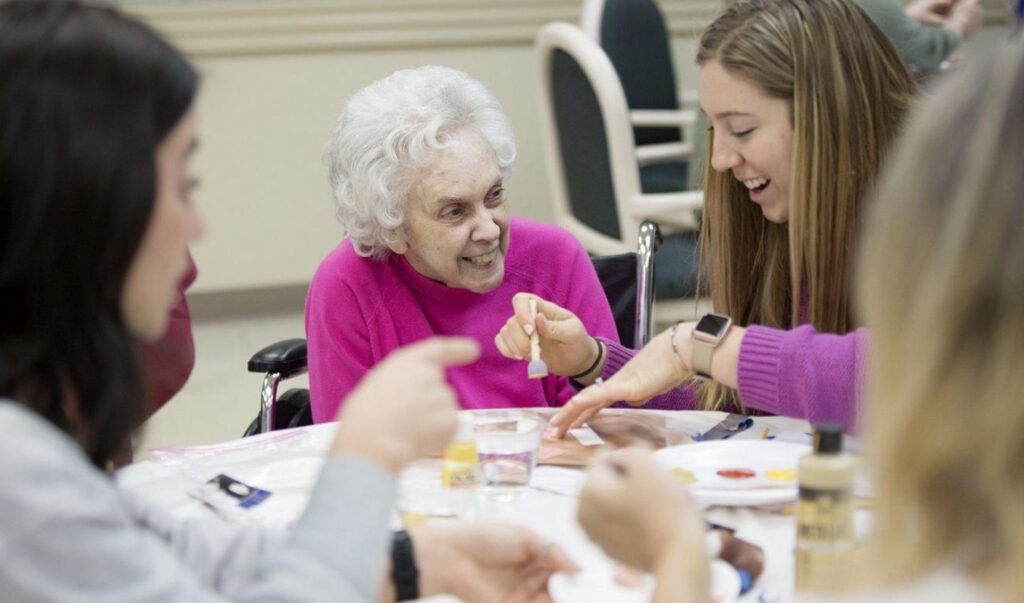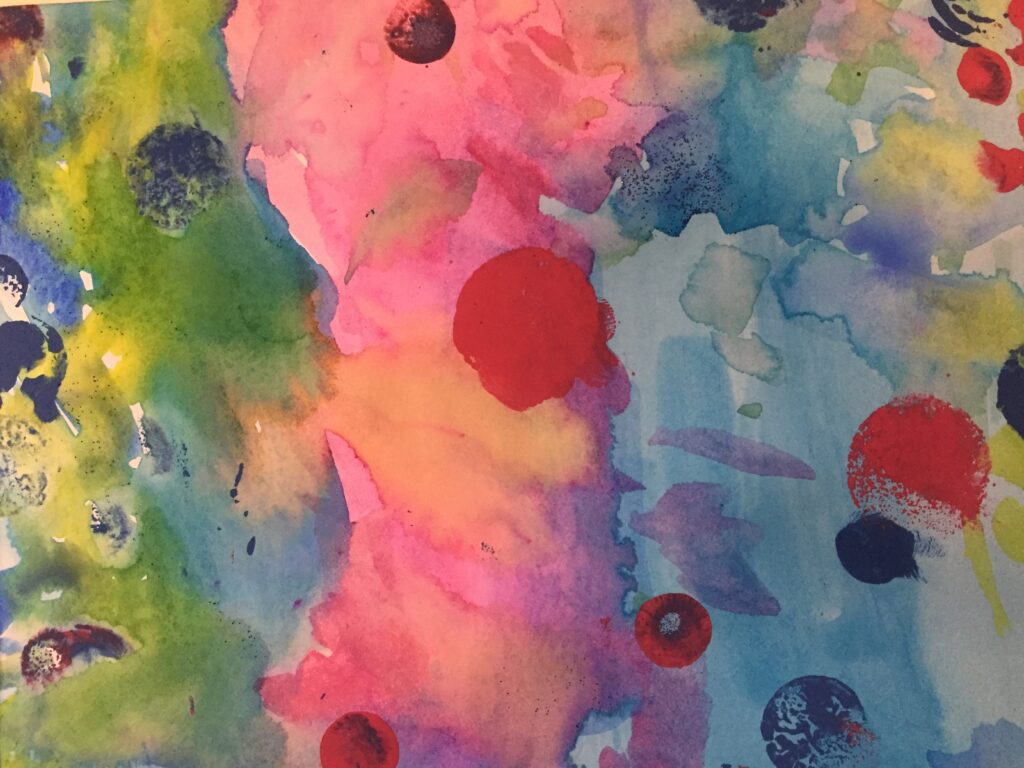Building Bridges in the Community through OMA, an Intergenerational Abstract Art Program for People Living with Dementia
Danker, S., Lokon, E. Pax, C. (2021). Building Bridges in the Community through OMA, an Intergenerational Abstract Art Program for People Living with Dementia. In A. Sinner, C. Lin, & R. L. Irwin (Eds.). Transversalities: International Perspectives on Community Art Education. Bristol, UK: Intellect Books.
Abstract
Opening Minds through Art (OMA) promotes reciprocal relationships between university students and elders living with dementia through art, building bridges across age and cognitive barriers (Lokon et al., 2012). This work is centered on intergenerational relationship building over time, using abstract art as a catalyst. Contemporary art education focused on social justice is about identifying issues in the community and problem-solving together using art. It can provide a way to emphasize experiences of a marginalized group of people by working directly with them, listening to their stories and constructing new narratives together. Creating art becomes a way to communicate ideas and represent one’s voice; it becomes a form of empowerment and can be transformative for the creator, facilitator and the viewer. The multidisciplinary aspect of OMA also connects with contemporary art education. Collaboration with partners when designing and implementing art experiences can generate meaning and connection making between content areas. Multidisciplinary curriculum values the expertise of partners within a community, in this case gerontologists, healthcare professionals, university educators and artists (among others). Another aspect of contemporary art education is therapeutic artmaking or art as therapy. This is different from art therapy as it is for the joy of making and processing experience, rather than intended as a therapy treatment. Additionally, OMA is not typically facilitated by licensed art therapists. Art can be a process to relieve stress, to make aesthetic choices and enjoy being present with others while creating. In OMA, the university students facilitate art experiences with elders with dementia, honoring their choices, focusing on quality time spent together, rather than only valuing the product. The art created becomes a reason to celebrate through local community art events, bringing together the artists and their families, care communities and university student partners.


